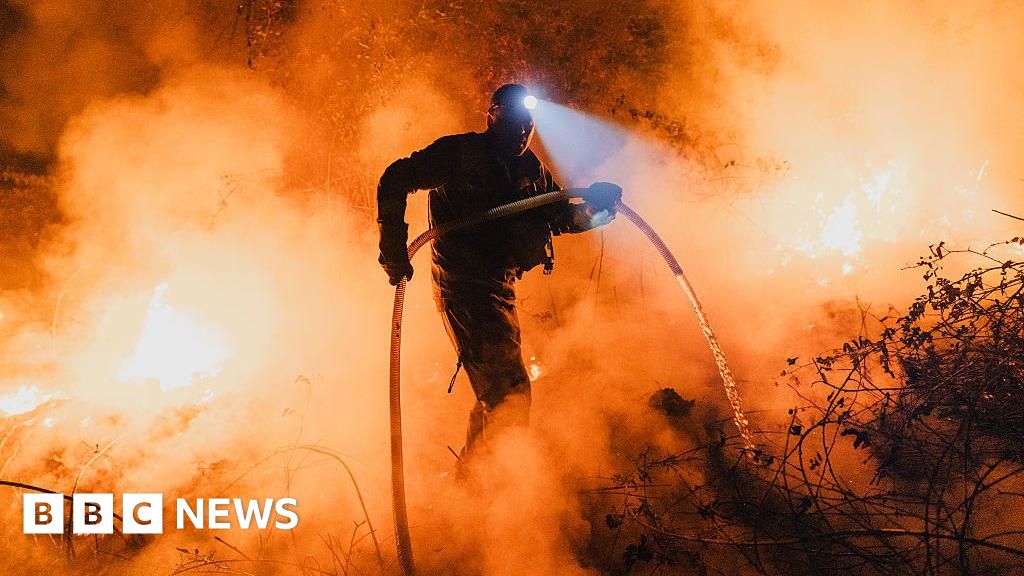- Criminal charges are yet to be laid a year after 34 people died when a building collapsed in George.
- According to a forensic report, there were design failures, weak concrete, and safety warnings were ignored.
- Police are still investigating the matter.
A year has passed since the unprecedented and deadly five-storey building collapse in Victoria Street, George, and still no one has been criminally charged.
A forensic report, compiled by the National Home Builders Registration Council (NHBRC) and commissioned by the national human settlements department, is among several reports handed to police investigators.
Police spokesperson Sergeant Christopher Spies said: “This office confirms that the investigation team has received a report from the National Home Builders Registration Council.”
The NHBRC found a range of issues at the site, including design flaws, the use of inferior-grade concrete, and insufficient structural support.
Spies said the contents of the report were “under analysis” and that the docket would be referred to the National Prosecuting Authority at the conclusion of the criminal investigation.
News24 understands that one of the hurdles to the completion of the police investigation is the incomplete labour department investigation.

Department of Employment and Labour manager David Esau told News24: “The matter is still ongoing. The department will announce when a conclusion or recommendation has been reached.”
Esau added that the department encountered problems during its investigation.
“The fact that there was nothing left of the collapsed building following the rescue mission has been the biggest challenge,” he said.
The department’s report falls under the Occupational Health and Safety Act and makes provision for determining the cause.
“All other reports speak about the action of individuals, not the cause of the incident,” he said.

Meanwhile, Western Cape Premier Alan Winde also handed a police a structural engineering report the Western Cape government had commissioned.
Winde said he was told the criminal investigation was around 65% complete.
In April, Human Settlements Minister Thembi Simelane released the findings of the NHRBC’s forensic report, and announced that five NHBRC officials, including CEO Songezo Booi, were suspended after they were implicated in the building collapse.
The officials were internally charged with dereliction of duty, misconduct, negligence, dishonesty, and misrepresentation in official inspection reports.
Simelane said the officials could also be criminally charged.
The NHBRC investigation found that inspectors failed to address several concerns, including health and safety, whether the builder was registered to construct the type of building they were inspecting, and the verification of geotechnical reports and structural drawings.
The report, which News24 has seen, stated that contractor Richard Kyle Andrews observed unusual building movements and vibrations on the roof slab two days before the collapse. Andrews also noted cracks around the base of a column on the ground floor.
In the basement, Andrews and his boss questioned the supporting columns’ narrow dimensions and the large spaces between them. The absence of critical features, such as slab expansion joints, raised further alarm.
However, Andrews told investigators appointed by the NHBRC that construction firm Liatel Developments downplayed the concerns.
Andrews’ account is among several other unheeded warnings in a report that details the enrolment and inspection failures that allowed significant structural defects to go unnoticed at 75 Victoria Street, including intentionally concealed cracks not adequately addressed, contributing to the deadly collapse.
Another sub-contractor, Joseph Ntethe, warned that cracks in the Neo Victoria Developments building started to appear as early as 2023. Ntethe warned that cracks were so large that he could see through them while standing in the basement. The site manager instructed them to patch the cracks with a mixture of sand, cement and water.
The report also stated that safety consultant Les Stephens raised red flags about inadequate safety measures, including improper scaffolding use, potential risks of prematurely removing temporary support structures, and using substandard props that could not carry the required weight.
According to the report, Stephens stopped site operations three times and eventually resigned as a safety consultant on the project.
READ | George building collapse: Warnings of structural defects went unheeded, report states
In the report, Andrews and Ntethe submitted detailed affidavits on cascades of failures that ostensibly contributed to the tragedy, including design problems, column spacing and strength, and the inferior-grade concrete.
The report stated that the George municipality approved plans after construction began, but the municipality denied this.
It stated a pre-application for rezoning was submitted in September 2020, followed by a revised submission in November. Approval for a five-storey block of flats came in October 2021.
Communications head Chantèl Edwards mentioned that a site development plan approved in May 2022 complied with the requirements. The building plan, including a basement, parking, and four residential floors, was submitted in July 2022 and approved in July 2023 after corrections.
Meanwhile, three Neo Victoria Developments directors have resigned since the collapse.
Dylan Brockway and Alwyn Gey van Pittius stepped down a week later, and Johannes Swanepoel followed suit a month later. Carel Swanepoel remains the only listed director, according to the Companies and Intellectual Property Commission.
Attempts to reach Neo Victoria Developments for comment were unsuccessful.
The appointed contractor, Liatel Developments, has distanced itself from any liability. Company owner Theuns Kruger said the company was cooperating with authorities, including the NHBRC, and had provided all requested information.
Kruger said:
Liatel was not the developer. We were the appointed contractor.
“We even submitted an extension of time claim to Neo Victoria for NHBRC enrolment delays, which was approved. It’s not the contractor’s responsibility to handle NHBRC enrolments. That lies with the developer.”
Kruger said the enrolment was apparently done by Neo Victoria using Liatel’s name, without their knowledge or consent. They only became aware of this after the collapse when the NHBRC contacted them for banking details to refund the enrolment fees.
“The fees were paid by the developer, not Liatel,” said Kruger.
“We’ve brought this to SAPS’s attention and cooperated fully with the NHBRC during their investigation.”
Liatel has since sought legal advice on the matter, including advice on possible action against people and entities involved, including the NHBRC.
 (1).png)
 3 months ago
12
3 months ago
12

















